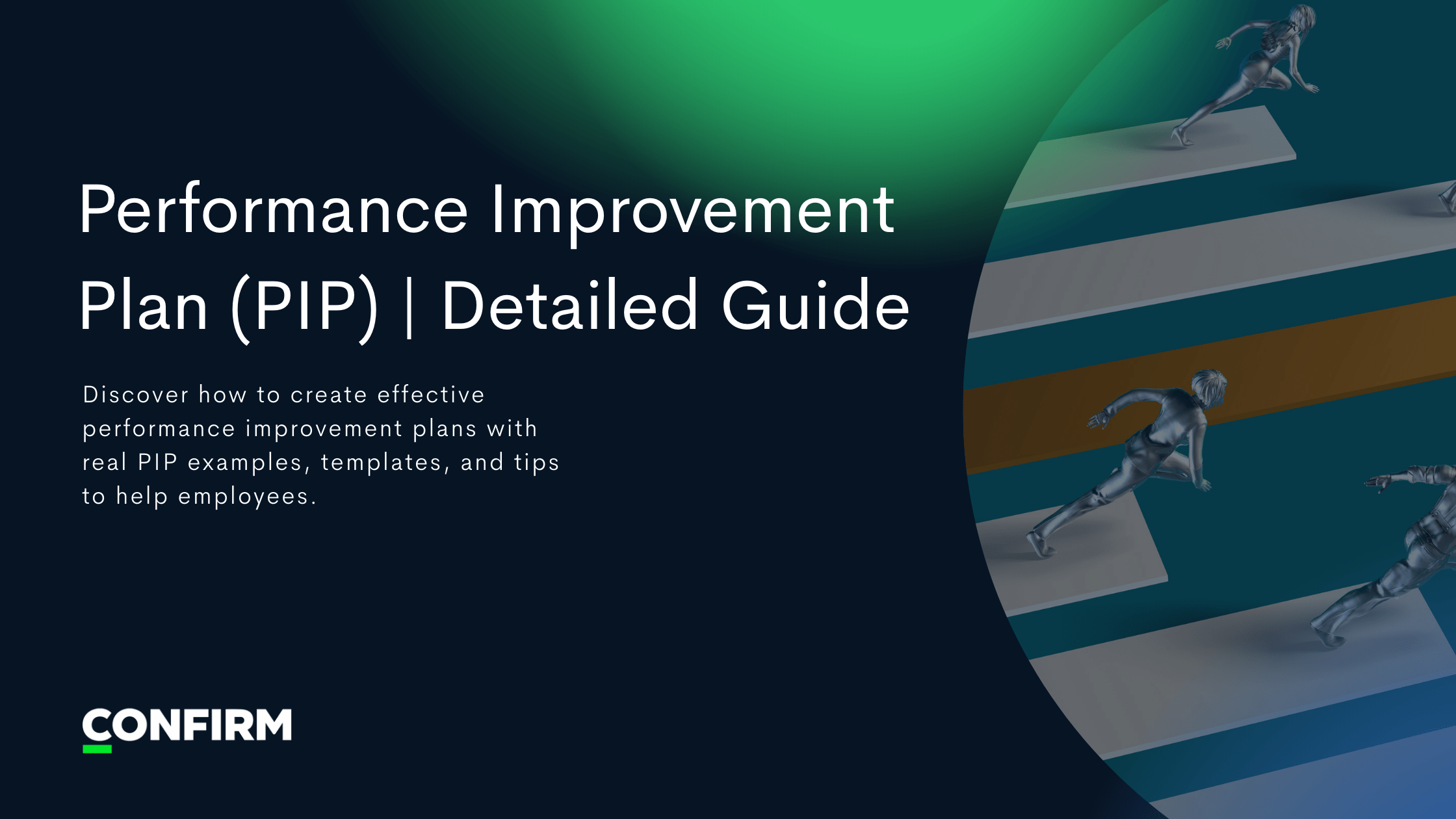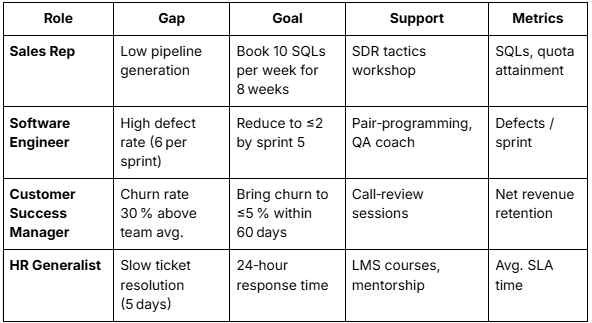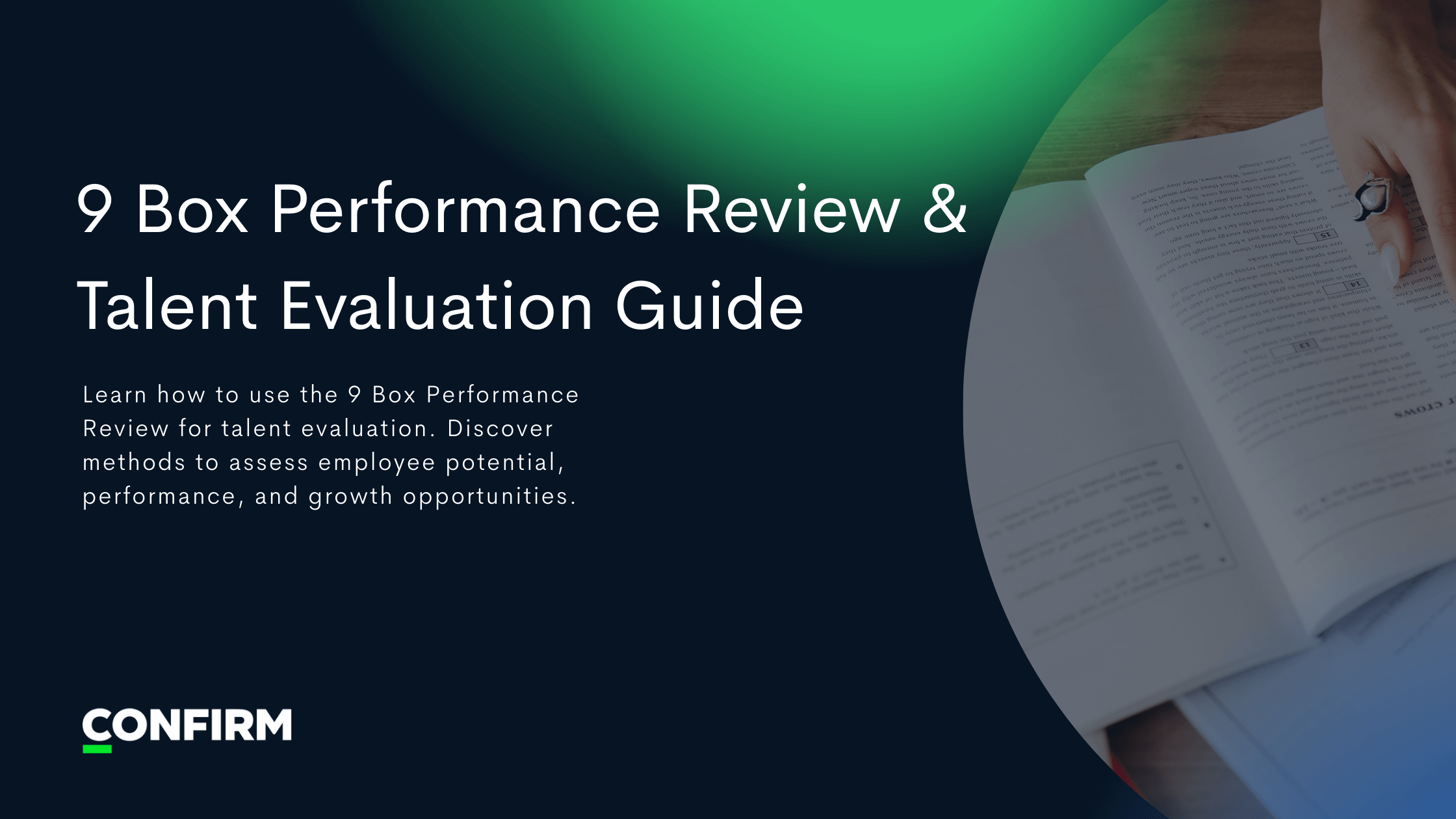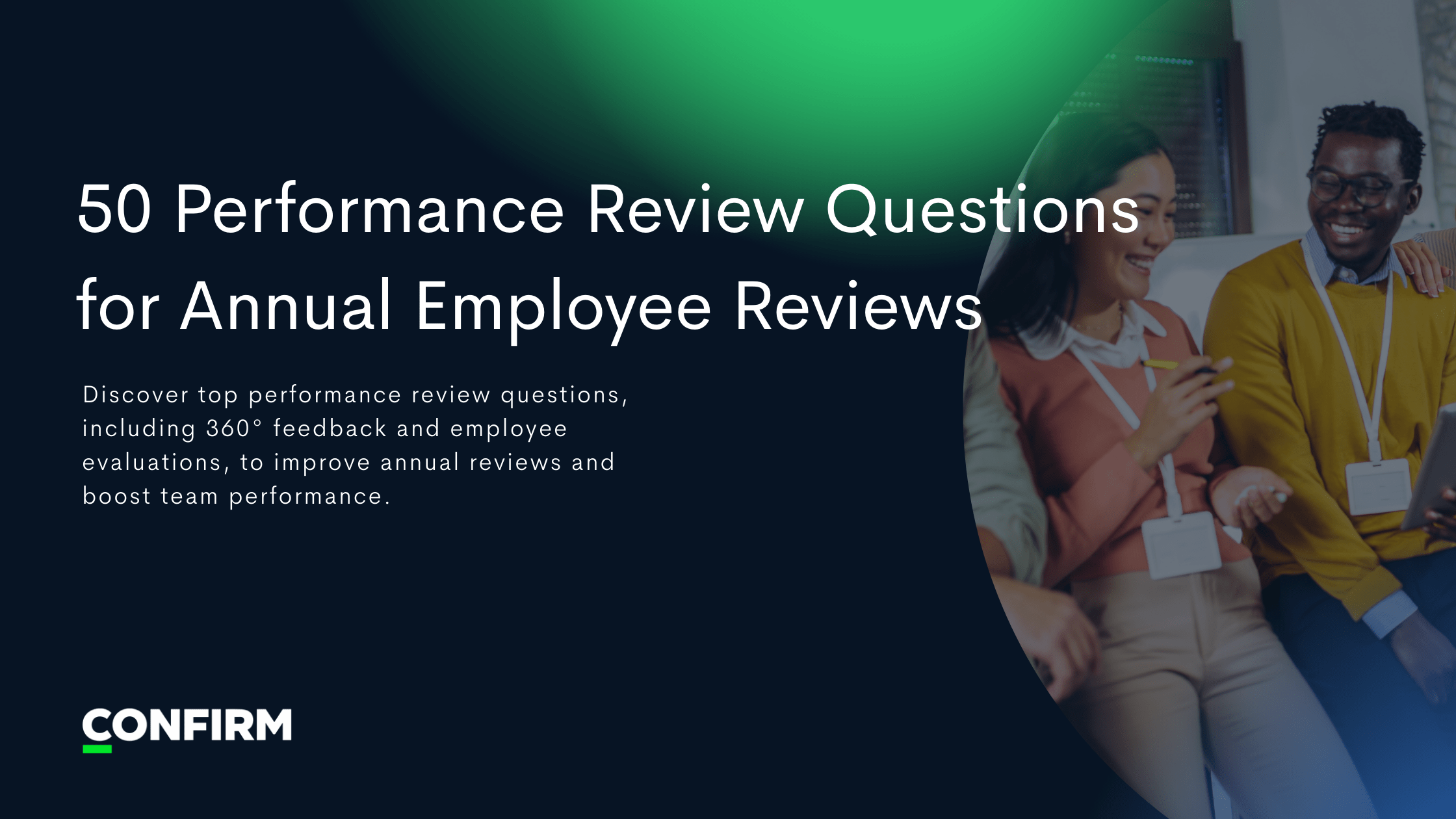
Blog post
Performance Improvement Plan (PIP) Detailed Guide
Discover how to create effective performance improvement plans with real PIP examples, templates, and tips to help employees.

What Is a Performance Improvement Plan (PIP)?
A performance improvement plan (PIP) is a formal, time‑bound document that outlines specific performance gaps, measurable goals, resources, and checkpoints to help an under‑performing employee reach clearly defined standards. Unlike a verbal warning, a PIP is collaborative and data‑driven, turning subjective concerns into objective, actionable steps—especially when powered by Organizational Network Analysis (ONA) and AI‑assisted insights from platforms like Confirm.
When Should You Use a Performance Improvement Plan?

Remember, timing matters: start a PIP early enough that the employee still has the bandwidth—and goodwill—to improve but late enough that you can point to clear evidence.
Benefits of a Well‑Structured PIP Plan
- Clarity & Alignment – Translates vague dissatisfaction into concrete, SMART goals.
- Reduced Bias – Using network‑wide data (e.g., ONA) minimizes manager subjectivity.
- Higher Retention – Employees who “turn the corner” through a PIP often become top contributors.
- Legal Protection – Documentation demonstrates fair treatment and due process.
- Manager Capability Building – Forces consistent coaching and check‑ins, elevating leadership habits.
Key Components of an Employee Performance Improvement Plan
- Issue Statement – A concise description of gaps (quality, productivity, behaviors).
- SMART Goals – Specific, Measurable, Achievable, Relevant, Time‑bound targets.
- Timeline & Checkpoints – Milestone dates for reviews and feedback loops.
- Resources & Support – Training, mentorship, and tools the company will provide.
- Consequences & Outcomes – Clear articulation of what success and failure mean.
- Sign‑Off & Documentation – Mutual acknowledgment by employee, manager, and HR.
Step‑by‑Step Process to Create a PIP Plan
1. Evaluate the Situation
Pull quantitative data (KPIs, peer reviews, ONA maps) and qualitative observations. Confirm that performance, not role clarity or workload, is the root issue.
2. Gain Insights into Their Performance
Interview peers and stakeholders, analyze Confirm’s “hidden‑talent” graphs, and identify systemic blockers vs. individual gaps.
3. Hold Manager Reviews
Managers draft preliminary goals and desired outcomes, validating them with HR.
4. Get Started with a PIP Template
Leverage the downloadable template below or import Confirm’s one‑click PIP builder.
5. Have HR Review
HR ensures language is unbiased, goals are realistic, and legal boxes are checked.
6. PIP Meeting
Manager and HR present the plan, stress collaborative intent, and secure verbal alignment before signatures.
7. Employee Check‑Ins
Weekly or bi‑weekly 15‑minute stand‑ups track progress. Confirm auto‑summarizes feedback, reducing admin load.
8. Plan Completion and Next Steps
Deliver a formal review on the end date, deciding on continuation, role adjustment, or separation.
What Should a Performance Improvement Plan Include?
Clear Identification of Issues
“Missed Q2 sales quota by 25%” is actionable; “bad attitude” is not.
SMART Goals
Example: “Increase demo‑to‑close rate from 15 % to 22 % by October 31.”
Defined Timeline Including Dates for Check‑Ins
Standard PIPs last 30–90 days, with midpoint reviews every 2 weeks.
Resources and Support
Training budget, shadowing top performers, product‑knowledge refreshers.
Consequences of Outcomes
- Successful completion: remain in role; eligibility for bonus reinstated.
- Partial progress: extend PIP 30 days.
- No progress: initiate termination.
Documentation
Store all notes in a centralized system (Confirm integrates with Workday & BambooHR for a single source of truth).
Performance Improvement Plan Example for Different Roles

Performance Improvement Plan Templates You Can Use
- Simple 30‑Day PIP (Google Sheets) – Ideal for frontline roles.
- 90‑Day Leadership PIP (Excel) – Incorporates behavioral competencies.
- ONA‑Enhanced PIP (Confirm) – Auto‑populates peer‑network insights and success metrics.
Download all templates or launch a one‑click PIP directly inside Confirm for automated tracking.
Making PIPs a Tool for Growth, Not Punishment
A well‑executed PIP is not a prelude to termination—it’s a structured growth engine. By grounding plans in data, providing ample support, and framing the process as developmental, companies transform struggling employees into high performers while safeguarding culture and productivity.
Ready to move from reactive performance management to proactive talent growth?
Get in touch with our experts today and see how Confirm’s ONA‑powered platform makes creating and tracking PIPs effortless.
Frequently Asked Questions
What is a performance improvement plan and how does it work?
A PIP is a structured document outlining performance issues, SMART goals, resources, timelines, and consequences. It works by aligning employee, manager, and HR efforts toward measurable improvement.
How long should a performance improvement plan last?
Most PIPs last 30–90 days, depending on role complexity and the severity of gaps.
What should be included in a PIP plan?
Issue statement, goals, timeline, resources, consequences, and signatures.
Can an employee refuse to sign a PIP?
They can, but HR should document the refusal and proceed; lack of signature doesn’t invalidate the plan.
Is a PIP the same as a warning?
No. A warning alerts; a PIP provides a roadmap and resources to close gaps.
How do I write a performance improvement plan example?
Identify the gap, set SMART goals, define milestones, assign resources, and outline success/failure criteria.
Ready to see Confirm in Action?
See why forward-thinking enterprises use Confirm to make fairer, faster talent decisions and build high-performing teams.









